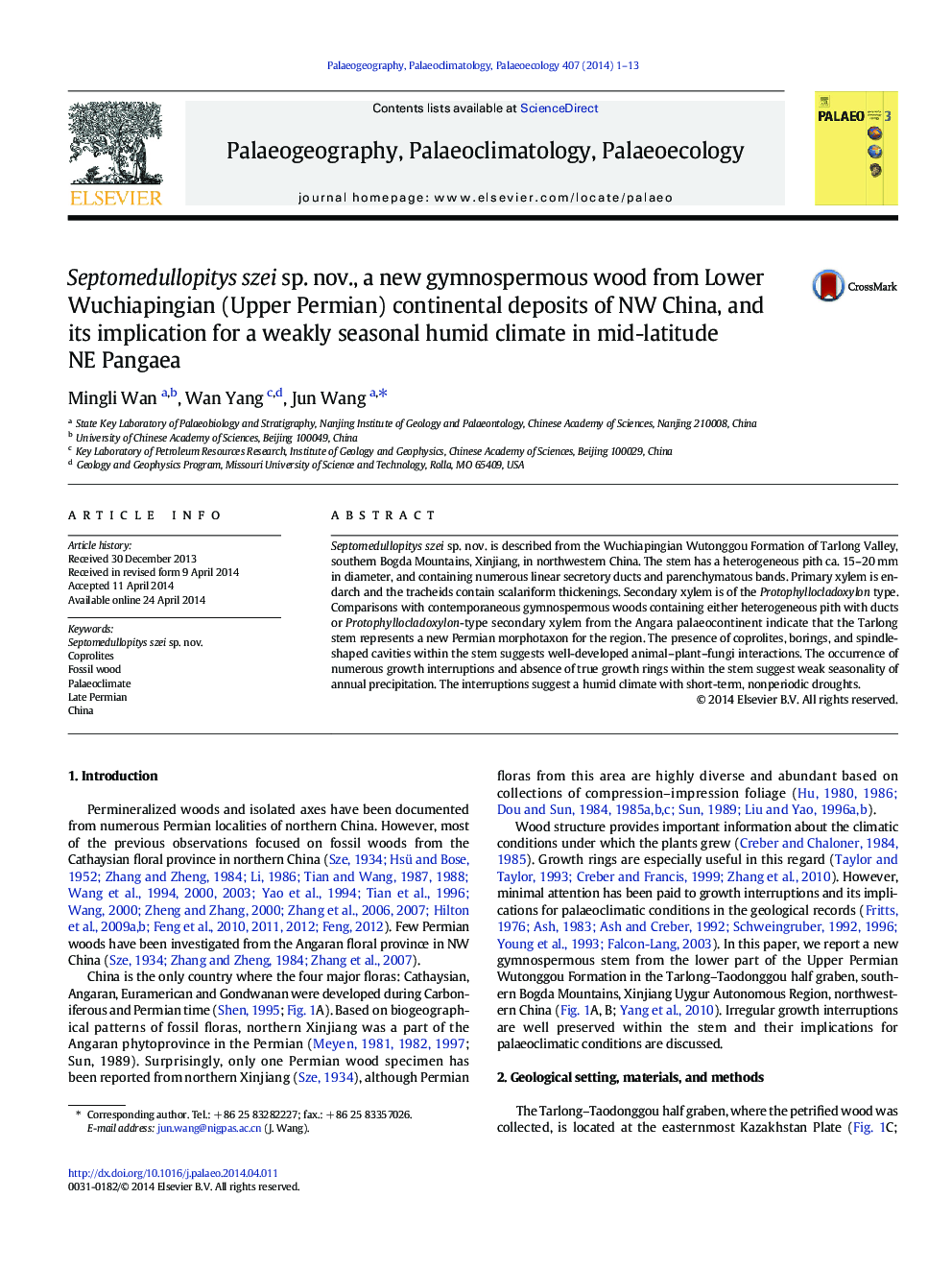| Article ID | Journal | Published Year | Pages | File Type |
|---|---|---|---|---|
| 4466218 | Palaeogeography, Palaeoclimatology, Palaeoecology | 2014 | 13 Pages |
•A new gymnospermous wood is discovered in Wuchiapingian lake deposits of NW China.•Tracheidal septa were originally tyloses, the first observed in any Permian woods.•Coprolites and excavations in the wood suggest fungal–arthropod–plant interactions.•A humid–subhumid climate with episodic drought in mid-latitude NE Pangaea
Septomedullopitys szei sp. nov. is described from the Wuchiapingian Wutonggou Formation of Tarlong Valley, southern Bogda Mountains, Xinjiang, in northwestern China. The stem has a heterogeneous pith ca. 15–20 mm in diameter, and containing numerous linear secretory ducts and parenchymatous bands. Primary xylem is endarch and the tracheids contain scalariform thickenings. Secondary xylem is of the Protophyllocladoxylon type. Comparisons with contemporaneous gymnospermous woods containing either heterogeneous pith with ducts or Protophyllocladoxylon-type secondary xylem from the Angara palaeocontinent indicate that the Tarlong stem represents a new Permian morphotaxon for the region. The presence of coprolites, borings, and spindle-shaped cavities within the stem suggests well-developed animal–plant–fungi interactions. The occurrence of numerous growth interruptions and absence of true growth rings within the stem suggest weak seasonality of annual precipitation. The interruptions suggest a humid climate with short-term, nonperiodic droughts.
